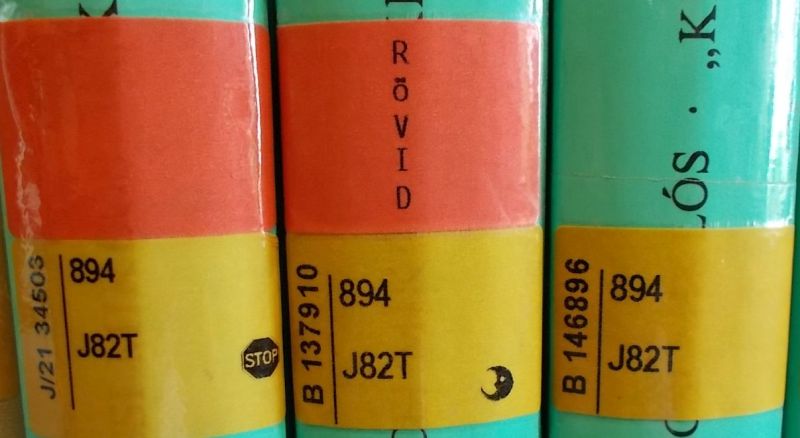Ground floor:
- Reference Collection: embraces general bibliographies, national bibliographies, lexicons, encyclopedias, general directories, almanacs, biographies, dictionaries in Hungarian and in other languages.
- Current Newspapers and General Periodicals: current issues of general interest newspapers (dailies, weeklies) and journals are housed here, plus some periodicals covering certain disciplines. Visitors will find the latest issues on the shelves while earlier issues of the current quarter or year are stored behind the shelves. Every serial has a number which helps to locate it in the reading area. The notation is on the top right corner of the cover page and it is combination of two letters (ÁF) and a number (1-626).
- Oriental Collection
- Music Collection
- University Collection
Floors: books and journals by topic
- 1st floor:
- General and Social Sciences Reading Room: here you find the Special Collection in History of Minorities and Regions, the European Documentation Centre and the Hungary Collection.
- 2nd floor:
- Historical Sciences Reading Room: history, archeology, sociology, politics and Hispanistic Collection and Military Collection.
- 3rd floor:
- Languages and Literatures Reading Room: here you find languages books of Confucius Institute, and Austrian Library.
- Collection of Old Books and Manuscripts
- 4th floor
- Life and Medical Sciences Reading Room and Mathematics and Sciences Reading Room
Using the reading areas
In the reading areas books and journals are marked with colored labels. On the 1st floor we use yellow, on the 2nd floor green, on the 3rd floor brown, on the 4th floor blue (sciences) and purple (life sciences) labels. In the Oriental Collection, the Music Collection we have white, on the journals of 4th floor blue/purple labels.

The periodicals of the reading rooms are excluded from borrowing. However, from the point of borrowing, there are three types of books placed on the shelves within each subject area:
- borrowable: only color label
- only for local use: red label + a STOP icon on the color label
- only for local use but borrowable for the night: red label with the inscription “RÖVID” + a Moon icon on the color label
Works in the reading rooms can be located with the help of the notations included in the colored labels put to their spines. The reading room call numbers is a combination of numbers and letters.
Elements of the reading room call numbers:
- the first group of characters (numbers, occasionally letters are added, e.g. 02): the topic of the book, it gives a general outline of the contents of the book (that is, books with the same notation are side-by-side, therefore users will find books with the same contents at the same place)
- the second group of characters (letter+number, e.g. K67): the place of the book within the topic (Cutter-number).
The third group of characters on the label is the accessions number, the individual identifier of the copy.
Librarians are available in every reading room to help finding the books and periodicals both in the catalog and on the shelves.
Maps and labels on the shelves help visitors to find the disciplines they look for.